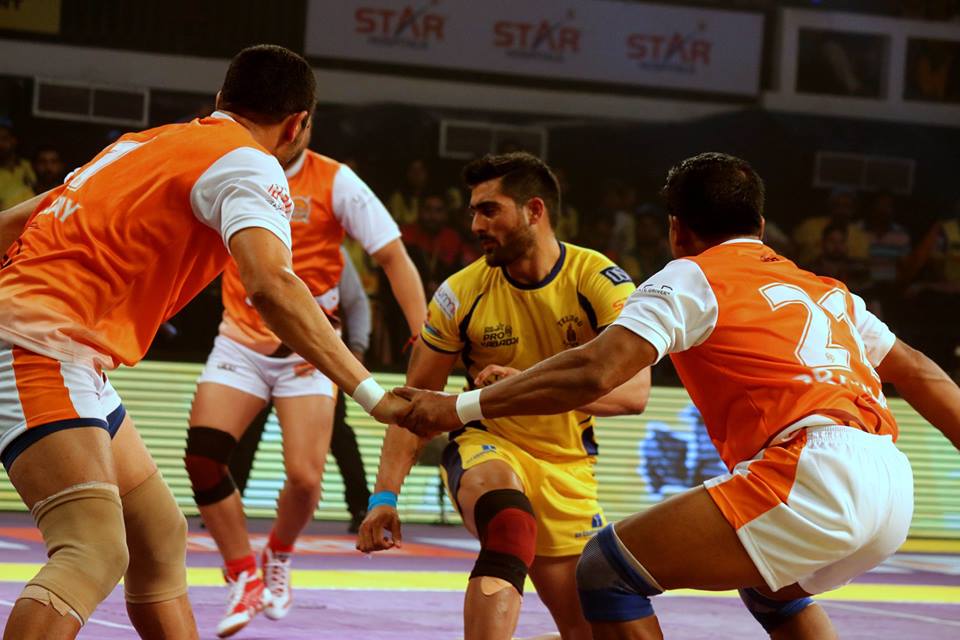The Rise of an Ancient Sport- Kabaddi

The British left a lot behind when they moved out of India in 1947 - the Lutyens, Rashtrapati Bhavan, the railways, not to forget major educational and social reforms. But their influence did not stop there and extended to sports as well. They introduced a sport in India that came in as a gentlemen’s
But before the spread of cricket into our streets and then to our hearts, there was another Indian sport which used to unite us, which made us hold hand in hand, a sport that strengthened bonds between rival teams, and even between villages. A sport which made us smell the soil and sing one word again and again – Kabaddi, Kabaddi, Kabaddi!
The origins of this ancient sport of India dates back to the time of the epics. Even though there is no historical evidence as to when it really came into existence, it is considered to have been a part of the Mahabharata period. History says that the word Kabaddi might have originated from a Tamil word “kai-
Even though there are several versions of Kabaddi like the
However, the contact sport’s popularity slowly faded away at the start of the 1980’s with cricket eclipsing all other sports after the 1983 World Cup win. With more and more youngsters picking up the bat, the sport found its refuge once again in rural India. It was no surprise that many teenagers knew nothing about the history or the popularity of this sport.
But what is it that makes a sport popular among the people?
Apart from the players and the excitement, the media and the social media can simply make or break a sport nowadays.
Besides the international exposure and the money, the arrival of the idiot box made the fortunes of cricket. With the sport coming to our households, the advertisements and the companies followed suit and took the game to another level leaving all other games behind. Cricket became a year-round game and that meant, more matches, more exposure than ever before and more money flowing into the coffers of the sports bodies and one and all involved.
With no television coverage or any media coverage, Kabaddi had lost the battle it had been fighting against cricket. The sport was relegated to a game of leisure than anything more. The condition was such that people remembered and celebrated India’s victory in the 1983 World Cup even in 2010, but not one knew the laurels that India was bringing home in kabaddi.
With the introduction of the IPL, it was made certain that no other sport could ever overtake cricket in terms of popularity. Money, popularity, fans everything was with cricket. But IPL’s arrival also opened a path for others to replicate the success of the leagues.
Times were sure to change, and it changed. The 24*7 cricket coverage took people away from the sport and it gives a chance for the lesser-known sports to again take the stage. However, it was still not easy for any sport to make a grand entry. Within few years, professional leagues emerged in each and every sport in the country.
In that overflow of leagues, came the Pro Kabaddi League. The idea was similar to the Indian Premier league. Privately owned teams and auctions all followed suit. Sponsors also came after the initial glitch. But no one was sure about the success of a village sport on television sets.
Will people accept Kabaddi? Will it be entertaining? And the biggest of it - Will it make money? All questions were valid, but the power of the sport answered everything with rollicking success in its two seasons.
With big broadcasters and sponsors throwing their weight behind the league, Kabaddi’s popularity rose up the viewership charts and became an instant phenomenon. As per reports, the viewership of Pro Kabaddi League has increased by 54% in 2015 from what it was in 2014. Apart from that, the inaugural viewership was 435 million, making it second after IPL, which had 560 million viewership.
Viewership means exposure. Exposure is a necessity for becoming known in the market. In today’s time, if it is out of sight, then it is out of mind. After two successful seasons in 2014 and 2015, the organisers of the tournament decided to make it two seasons in a year to cash in on the growing popularity of the game. With another season of ‘Le Panga’ around us, it won’t be long before the likes of Anup Kumar, Ajay Thakur and Rahul Chaudhari become household names. But with the growing trend, maybe someday, Kabaddi will cross cricket and take back the place, that belonged to it.
(Also Read: From IPL to PWL: A country of Leagues)
